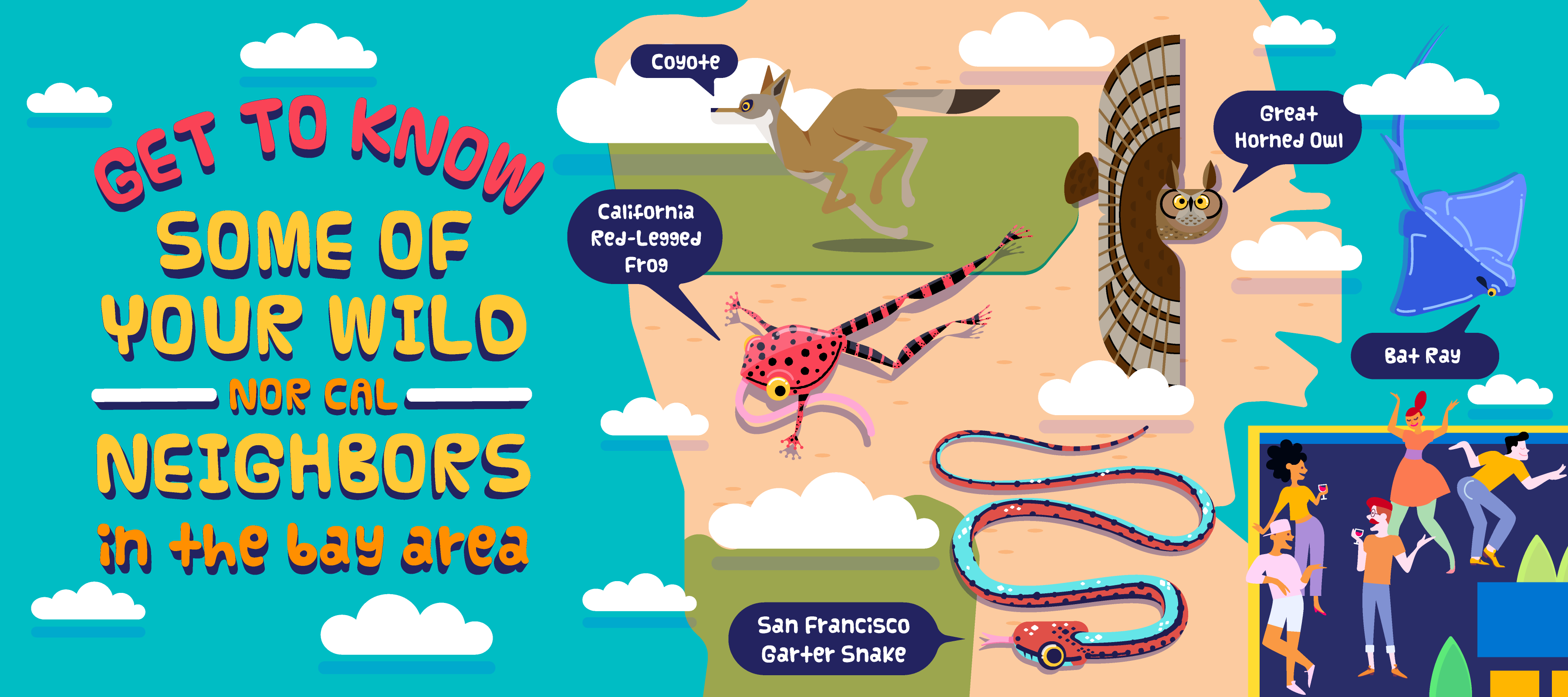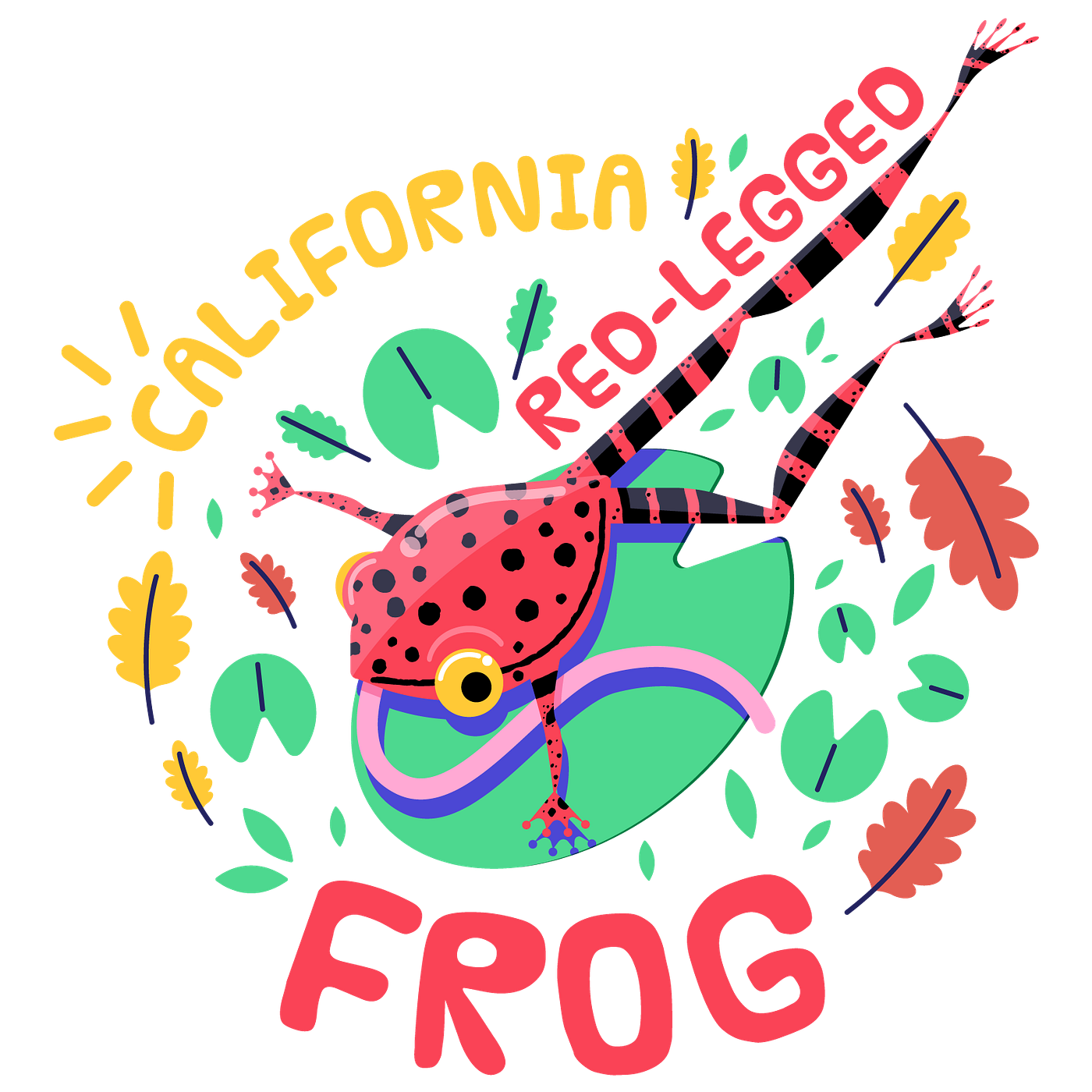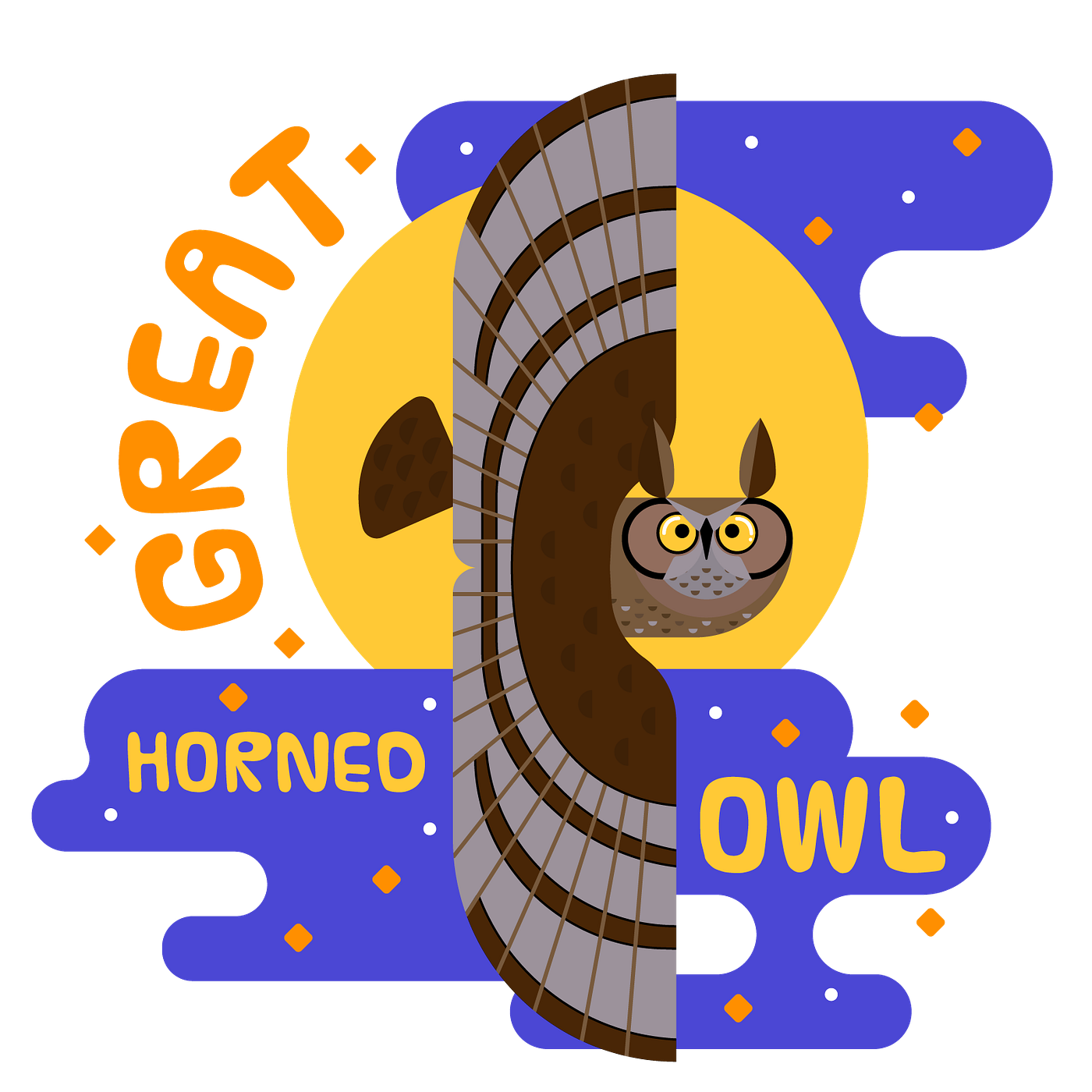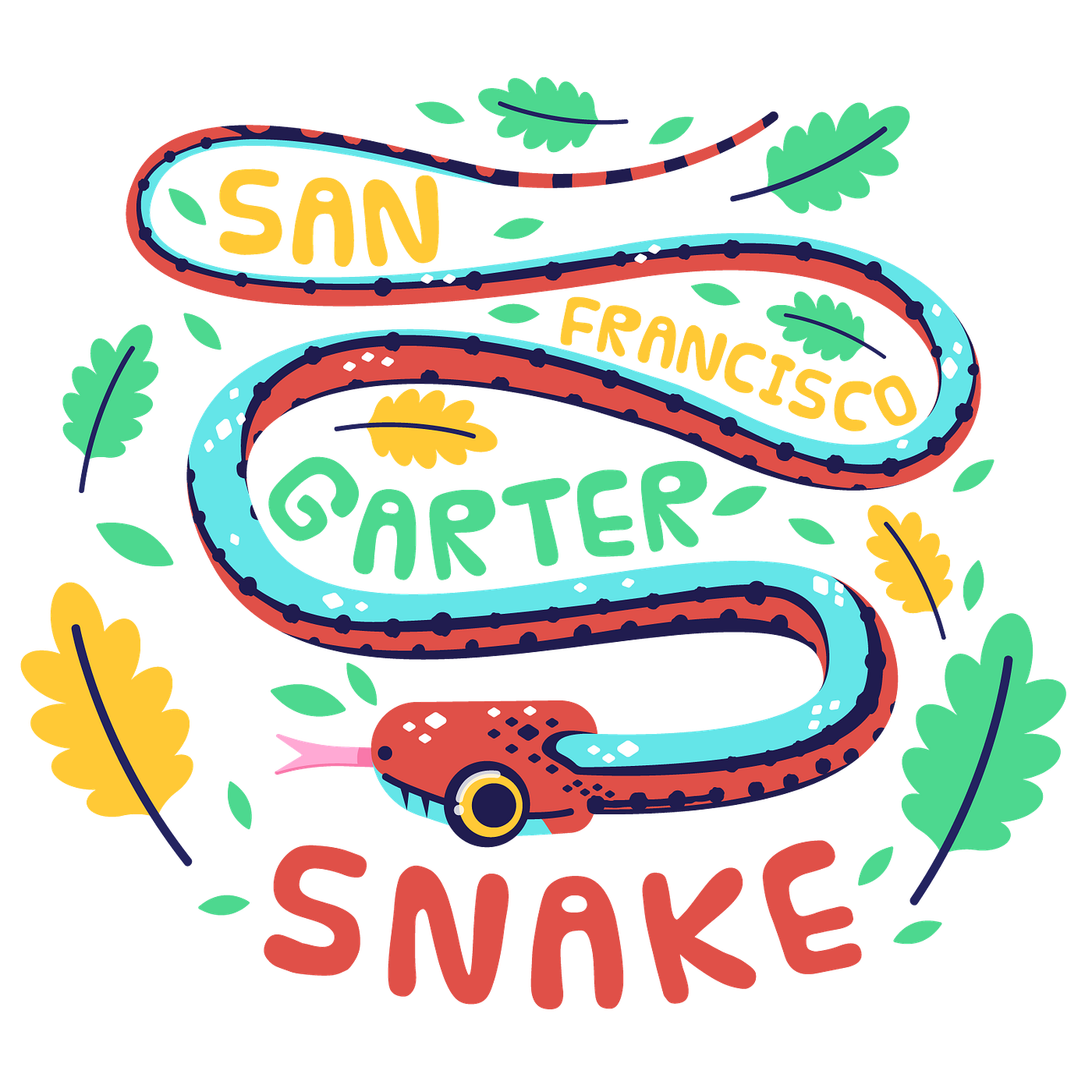
Illustrations by Daniel Mok
If you thought San Francisco’s fauna was limited to seagulls, pigeons and the sea lions at Pier 39, you’re mistaken. Surrounded by rich ocean waters and blessed with several large, tree-filled parks, San Francisco houses a number of unique, surprising and—OK—sometimes annoying predators and prey.
You can spot these true San Francisco natives if you know where (and when) to look.

Even if you’re a longtime San Francisco resident, chances are you’ve never seen a red-legged frog. First made famous in Mark Twain’s The Celebrated Jumping Frog of Calaveras County, the California red-legged frog is now an endangered species due to habitat loss, overhunting in the 19th and 20th centuries, and the introduction of invasive species such as the bullfrog, which likes to eat red-legged frogs. The frog’s back is reddish brown or gray with small black spots, and its belly and the underside of its legs sport red coloring.
Where to find it: According to Bay Area wildlife biologist Rob Schell, you may be able to spot this rare amphibian in wetlands and lakes in Golden Gate Park.

San Francisco is home to a variety of different owl species, including the great horned owl. You can try listening for their distinctive hoots after sunset. Great horned owls are probably what you picture when you think of an owl: they have brown faces, dark eyebrows above their yellow eyes and feathery tufts atop each ear. Earlier this year, a great horned owlet was blown astray onto someone’s porch and subsequently released back into the wild.
Where to find it: You can find the great horned owl in the Presidio year-round, as well as at the western end of Golden Gate Park near the Bison Paddock. They’re most active late at night and just before sunrise.

Near the very southern edge of San Francisco’s border with San Mateo County, you may be able to spot “the most beautiful serpent in North America”—the San Francisco Garter Snake. This snake really is unique: it has a burnt orange head, a turquoise body and thick orange and black stripes that run along its back. They’re mostly active in the day but very tricky to spot due to how quickly they tend to slither back into the water — and because their habitat has been decimated by urban development.
Where to find it: The endangered San Francisco Garter Snake lives only on the San Mateo Peninsula, primarily in dense freshwater ponds and streams where its favorite food, the California red-legged frog, likes to live.

As you gaze into the depths of the San Francisco Bay, you might spot something large looming underneath the surface. A great white?! It’s possible, but you’re more likely to spot a stingray known as the bat ray. At birth, bat rays have a wingspan of about one feet, but that span eventually grows to six feet at the largest. They love venturing near the coast to feast on crabs, clams and shrimp during high tide or during the beginning hours of the outgoing tide.
Where to find it: Good places to observe them in (or near) San Francisco include Candlestick Point, Coyote Point, along the Bay Trail and at Dumbarton Pier. You can also spot them in Tomales Bay and Point Reyes.

A number of coyotes also call San Francisco home — good reason to keep your dogs and cats inside, especially at night. Coyotes are typically shy but may get aggressive around breeding season in the summer when they’re trying to protect their pups. If you encounter one, you should yell in a deep voice, wave your arms and maintain eye contact, which apparently makes them uncomfortable (we don’t blame them).
Where to find it: A section of trail north of Presidio Golf Course is currently closed due to aggressive coyote activity, so that’s probably a good place to spot one (although definitely not a smart thing to do). In Golden Gate Park, coyote sightings tend to peak from April through August. You can also spot them in Lands End and in Glen Park.







